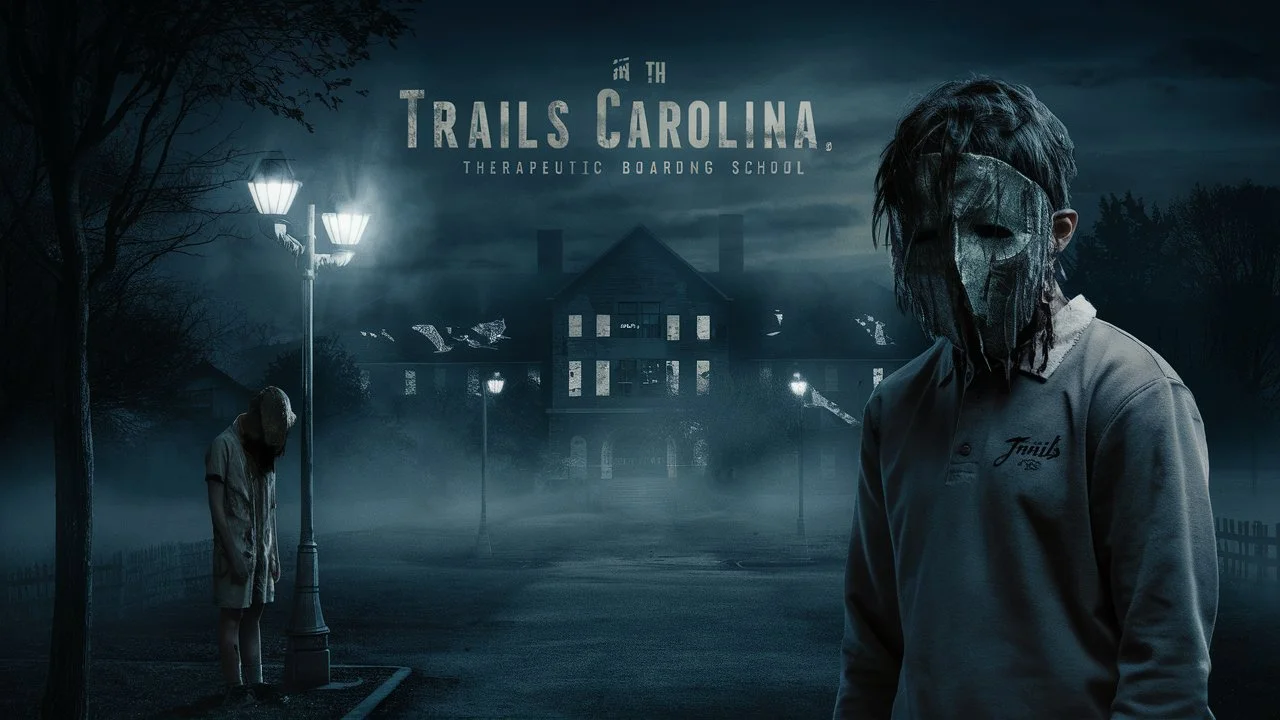Wilderness therapy programs like Trails Carolina Horror Stories promise life-changing experiences for troubled teens, but do these claims hold up to scrutiny? This article delves into the reality behind outdoor behavioral healthcare, exploring the controversies surrounding therapeutic wilderness programs. We’ll examine:
- The marketed benefits vs. participant experiences
- Safety concerns and allegations of abuse
- The effectiveness of wilderness treatment centers
As the troubled teen industry faces increasing criticism, it’s crucial to investigate the practices of programs like Trails Carolina. By uncovering the truth behind wilderness therapy claims, we aim to inform parents, mental health professionals, and policymakers about the potential risks and realities of these controversial intervention methods for adolescent mental health treatment.
Background Of Wilderness Therapy

Wilderness therapy emerged in the 1960s as an alternative approach to teen treatment programs. This outdoor behavioral healthcare model aims to help troubled youth through nature-based experiences and therapy. Key aspects include:
- Removal from familiar environments
- Physical challenges and survival skills
- Group and individual therapy sessions
Proponents claim wilderness therapy can address issues like substance abuse, behavioral problems, and mental health disorders. The industry has grown significantly, with numerous programs like Trails Carolina offering therapeutic wilderness experiences.
However, the effectiveness of wilderness therapy remains debated. While some studies suggest positive outcomes, critics argue that research is often flawed or biased. Concerns about safety, abuse, and lack of regulation have also surfaced.
About Trails Carolina Horror Stories
Trails Carolina, established in 2008, is a prominent player in this field. They market their program as a transformative journey for teens struggling with various issues. But as we’ll explore, the reality may differ from their polished promotional materials.
As we delve deeper into Trails Carolina and similar programs, it’s essential to critically examine their claims, practices, and impact on vulnerable youth. The troubled teen industry faces increasing scrutiny, and understanding the truth behind wilderness therapy is crucial for families considering these interventions.
Analyzing Trails Carolina’s Claims
Trails Carolina’s marketing paints a picture of transformative experiences and high success rates. Their website boasts about helping teens overcome challenges and develop life skills. But how do these claims stack up against reality?
Let’s examine some key assertions:
- “95% of students show improved emotional and behavioral functioning”
- “Highly trained and experienced staff”
- “Safe and nurturing environment”
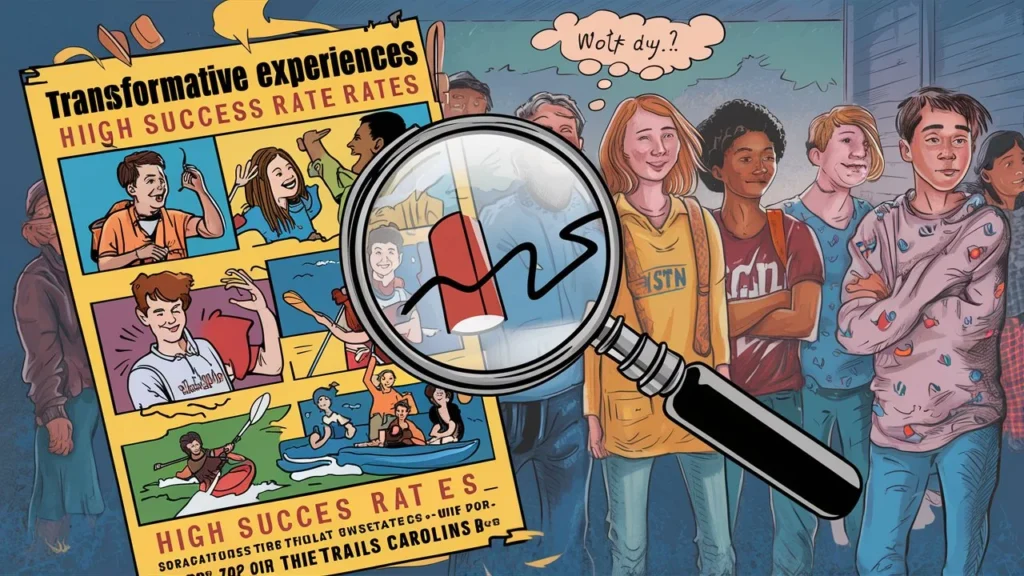
Participant testimonials tell a different story. Many former students report experiences that contradict these claims. Safety concerns, undertrained staff, and lasting trauma are common themes in their accounts.
The program’s advertised success rates lack independent verification. Critics argue that self-reported data and short-term follow-ups don’t accurately reflect long-term outcomes. Without standardized measures across the troubled teen industry, these statistics are hard to evaluate.
Trails Carolina’s staff qualifications have also come under scrutiny. While they claim to employ experienced professionals, investigations have revealed instances of undertrained or inexperienced staff handling complex situations.
The “safe and nurturing environment” promoted by Trails Carolina contrasts sharply with reports of harsh conditions, punitive measures, and even abuse. These allegations raise serious questions about the program’s practices and oversight.
As we dig deeper, it becomes clear that the gap between marketing claims and participant experiences is significant. This discrepancy underscores the need for greater transparency and accountability in wilderness therapy programs.
Trails Carolina Horror Stories: Focusing On Participant Testimonials
The heart of the controversy surrounding Trails Carolina lies in the stories of its former participants. These firsthand accounts, often referred to as “Trails Carolina horror stories,” paint a troubling picture of life within the program.
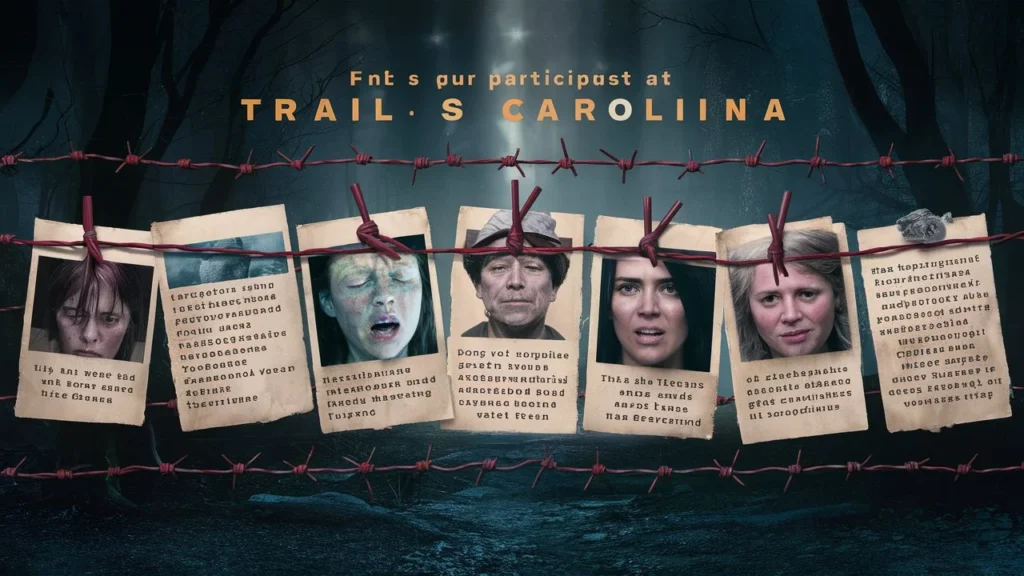
Many teens report experiencing:
- Extreme physical hardships
- Emotional manipulation
- Inadequate medical care
- Punitive practices disguised as therapy
One former student, Sarah (name changed), described being forced to hike for hours with an untreated foot injury. “They said the pain was part of my growth,” she recalled. “I still have issues walking today.”
Another participant, Tom, spoke of the emotional toll. “They used isolation as punishment. I spent days alone in the woods. It wasn’t therapy; it was torture.”
Reports of food and sleep deprivation are common. Many teens claim these tactics were used to break their will rather than help them heal.
Alarmingly, some testimonials include allegations of physical and emotional abuse by staff members. These claims range from rough handling during restraints to verbal humiliation.
Long-term effects reported by survivors include PTSD, trust issues, and difficulty readjusting to normal life. Many feel the program caused more harm than good.
It’s important to note that not all experiences are negative. Some participants do report benefits. However, the volume and severity of troubling accounts raise serious concerns about Trails Carolina’s practices and the broader wilderness therapy industry.
These testimonials highlight the urgent need for better oversight, transparent reporting, and independent investigations into wilderness treatment centers like Trails Carolina.
Staff Qualifications And Training
The quality of staff at wilderness therapy programs like Trails Carolina is crucial for participant safety and treatment effectiveness. However, investigations reveal concerning gaps between claimed qualifications and reality.
Trails Carolina advertises:
- Licensed therapists
- Experienced field instructors
- Comprehensive staff training
But former employees and participants paint a different picture. Many report inadequate training and inexperienced staff handling complex situations.
One ex-staff member, who wished to remain anonymous, stated, “I was thrown into the field after just a week of training. I had no idea how to handle crisis situations.”
Qualifications for field staff often fall short of what parents might expect. While therapists are typically licensed, many direct-care staff have minimal qualifications beyond a high school diploma and basic first aid certification.
Staff-to-participant ratios are another concern. During peak seasons, ratios can become dangerously high, compromising safety and care quality.
High turnover rates plague the industry, including Trails Carolina. This revolving door of staff disrupts continuity of care and can leave inexperienced employees in charge of vulnerable teens.
Critics argue that low pay and challenging working conditions contribute to these staffing issues. One former instructor commented, “We were overworked and underpaid. It’s no wonder people didn’t stick around.”
The lack of standardized training requirements across the troubled teen industry exacerbates these problems. Without consistent standards, programs like Trails Carolina can define “qualified” on their own terms.
These staffing issues raise serious questions about the quality of care and safety at wilderness therapy programs. They underscore the need for stricter regulations and transparent reporting of staff qualifications and training.
Safety and Oversight at Trails Carolina

Safety concerns are at the forefront of criticisms against Trails Carolina and similar wilderness therapy programs. Despite claims of a secure environment, incidents and allegations suggest significant oversight gaps.
Key safety issues include:
- Inadequate emergency protocols
- Lack of proper medical care
- Insufficient monitoring of field conditions
Trails Carolina, like many wilderness treatment centers, operates in remote areas. This isolation can delay emergency responses. One parent reported, “When my son had an allergic reaction, it took hours for help to arrive.”
State regulations for these programs vary widely. North Carolina, where Trails Carolina operates, has been criticized for lax oversight of therapeutic wilderness experiences. This regulatory vacuum can leave participants vulnerable.
Incident reporting is another area of concern. Critics argue that programs like Trails Carolina may underreport or downplay serious events. Without transparent reporting mechanisms, it’s challenging to assess the true safety record.
Accreditation is often touted as a mark of quality, but its value is debated. While Trails Carolina holds certain accreditations, critics argue these standards aren’t rigorous enough to ensure participant safety.
Weather-related risks pose another threat. Participants have reported being forced to continue activities in dangerous conditions. One former student recalled, “We hiked through a lightning storm. Our safety seemed secondary to the program schedule.”
Medical oversight is frequently cited as inadequate. Many wilderness therapy programs, including Trails Carolina, rely on wilderness first responders rather than full medical staff. This can lead to delayed or improper treatment of injuries and illnesses.
These safety concerns highlight the need for stricter regulations, independent oversight, and transparent reporting in the troubled teen industry. Without these measures, the well-being of vulnerable youth remains at risk.
Science Behind Wilderness Therapy
The effectiveness of wilderness therapy, including programs like Trails Carolina, is a subject of ongoing debate in the mental health community. While proponents claim significant benefits, critics argue that the scientific evidence is lacking.
Key points of contention include:
- Quality of existing research
- Long-term effectiveness
- Comparison to other treatment methods
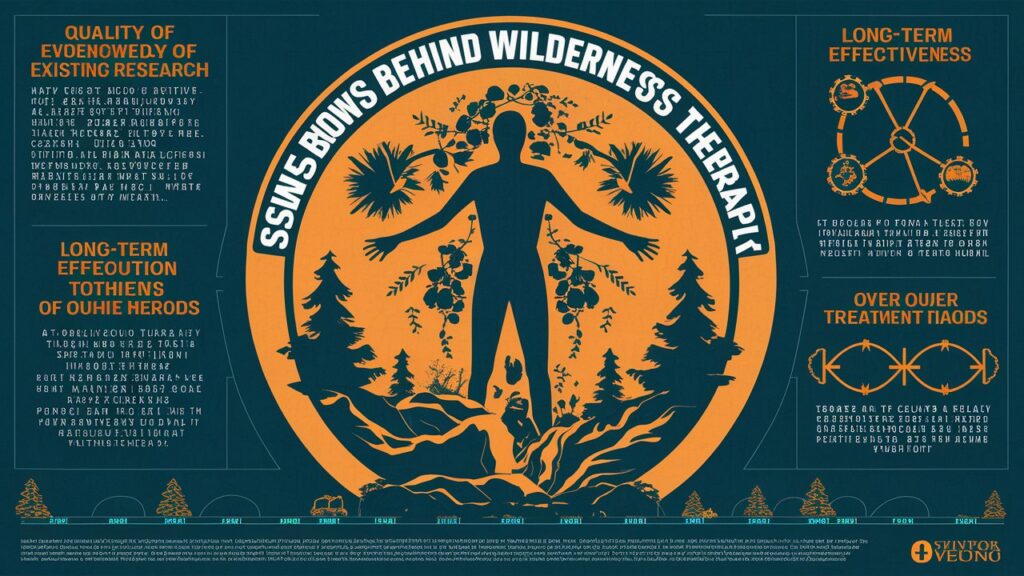
Many studies on wilderness therapy suffer from methodological flaws. Small sample sizes, lack of control groups, and short follow-up periods are common issues. This makes it difficult to draw definitive conclusions about the treatment’s efficacy.
One meta-analysis found positive short-term outcomes for wilderness therapy participants. However, the same study noted a lack of long-term follow-up data. This gap raises questions about the lasting impact of programs like Trails Carolina.
Critics argue that positive results may be due to factors unrelated to the wilderness setting. The break from negative influences at home, increased physical activity, and intensive therapy could potentially be replicated in less extreme environments.
Comparisons with other treatment approaches are limited. Few studies directly compare wilderness therapy to established evidence-based treatments for adolescent mental health issues. This lack of comparative data makes it challenging to justify the high costs and potential risks of wilderness programs.
Additionally, the troubled teen industry, including outdoor therapy programs, has been criticized for cherry-picking data and overstating success rates. Independent, peer-reviewed research is relatively scarce.
Some researchers argue that the potential for harm in wilderness therapy is understudied. The psychological impact of forceful removal from home and exposure to extreme conditions needs more thorough investigation.
While anecdotal success stories exist, the scientific foundation for wilderness therapy remains shaky. More rigorous, long-term studies are needed to validate the claims made by programs like Trails Carolina and to ensure that vulnerable teens receive truly effective treatment.
Financial Aspects Of Wilderness Therapy Programs
The cost of wilderness therapy programs like Trails Carolina is a significant concern for many families. These programs often come with hefty price tags, raising questions about accessibility and financial ethics.
Key financial issues include:
- High program fees
- Limited insurance coverage
- Potential for predatory practices
Trails Carolina, like many wilderness treatment centers, charges thousands of dollars per month. A typical 10-12 week stay can cost upwards of $50,000. This high cost puts these programs out of reach for many families struggling with troubled teens.
Insurance coverage for wilderness therapy is often limited or non-existent. Many providers classify these programs as “experimental” or “educational” rather than medical treatment. This leaves families bearing the full financial burden.
Some critics accuse the troubled teen industry of exploiting desperate parents. High-pressure sales tactics and promises of “miracle cures” can lead families to make hasty, expensive decisions. One parent shared, “They told us it was our last chance to save our daughter. We maxed out our credit cards to pay for it.”
Financial aid is limited, and some families report feeling misled about available assistance. This can result in significant debt for those who believe the program is their only option.
The lack of standardized pricing across the industry makes it difficult for families to compare programs. Some argue this opacity allows for price gouging.
Critics also point out that the high costs don’t always correlate with better outcomes or safer conditions. In some cases, expensive programs have faced serious allegations of abuse and neglect.
The financial strain of wilderness therapy can have lasting impacts on families. Some report depleting retirement savings or remortgaging homes to afford treatment, often with disappointing results.
These financial concerns highlight the need for greater transparency, fair pricing practices, and improved insurance coverage for mental health treatments. They also underscore the importance of exploring more affordable, evidence-based alternatives for troubled teens.
Legal Issues And Controversies Surrounding Trails Carolina
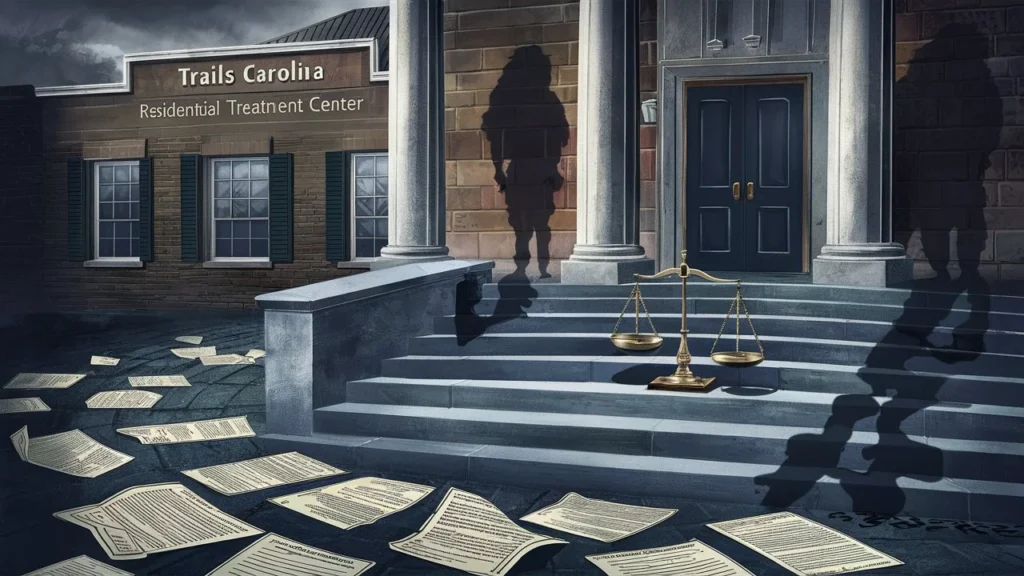
Trails Carolina, like many wilderness therapy programs, has faced legal challenges and controversies. These issues shed light on the broader problems within the troubled teen industry.
Key legal concerns include:
- Lawsuits alleging abuse and neglect
- Regulatory violations
- Wrongful death claims
Several former participants have filed lawsuits against Trails Carolina (Trails Carolina Horror Stories), alleging physical and emotional abuse. One notable case involved a teenager who claimed she was forced to hike with an injured ankle, resulting in long-term damage. The case was settled out of court, as are many such suits.
Regulatory issues have also plagued the program. In 2021, North Carolina officials cited Trails Carolina for operating without proper licensing. This raised questions about the state’s oversight of wilderness treatment centers.
While Trails Carolina (Trails Carolina Horror Stories) hasn’t faced wrongful death lawsuits, such cases have occurred at similar programs. These tragic incidents highlight the potential risks of wilderness therapy and the need for stringent safety protocols.
Settlements in these cases often include non-disclosure agreements, making it difficult to assess the full extent of legal issues. Critics argue this lack of transparency allows problems to persist.
Some former participants have sought legal action for alleged violations of informed consent. They claim the program’s marketing materials misrepresented the true nature of the treatment.
Advocacy groups have called for stricter regulations and oversight of the troubled teen industry. They argue that current laws don’t adequately protect vulnerable youth in these programs.
The legal challenges faced by Trails Carolina and similar programs underscore the need for reform. They highlight gaps in regulation, issues with transparency, and the potential for harm in wilderness therapy settings.
As lawsuits continue to emerge, they serve as a stark reminder of the risks associated with sending troubled teens to remote, intensive programs like Trails Carolina.
Industry-Wide Problems In Wilderness Therapy
The issues surrounding Trails Carolina reflect broader concerns within the wilderness therapy and troubled teen industries. These systemic problems highlight the need for comprehensive reform.
Key industry-wide issues include:
- Lack of standardization
- Insufficient regulation
- Questionable marketing practices
Wilderness treatment centers operate with varying standards and practices. This lack of consistency makes it difficult for families to evaluate programs or ensure quality care. One expert noted, “What’s considered therapy at one program might be seen as punishment at another.”
Regulatory oversight varies significantly by state. Some states have minimal requirements for outdoor behavioral healthcare programs, leading to potential safety risks. This patchwork of regulations allows some programs to operate with little scrutiny.
Marketing tactics in the troubled teen industry often raise ethical concerns. Programs may exaggerate success rates or downplay risks. One parent shared, “The brochure promised miracles. The reality was far different.”
The use of transport services, which forcibly remove teens from their homes, is a controversial industry practice. Critics argue this can be traumatic and violates teens’ rights.
There’s also growing concern about the “troubled teen industry pipeline.” Some worry that wilderness programs feed into long-term residential treatment, keeping teens in the system for extended periods.
Accountability is another industry-wide issue. When problems occur, it’s often difficult for families to seek recourse or get accurate information about incidents.
The lack of long-term, independent studies on wilderness therapy effectiveness is a problem across the industry. This gap in research makes it challenging to justify the use of these intensive interventions.
Staff turnover and burnout are common issues, potentially compromising the quality of care. Low pay and challenging working conditions contribute to this problem.
These industry-wide issues underscore the need for better regulation, standardized practices, and increased transparency in wilderness therapy and the broader troubled teen industry. Without addressing these systemic problems, programs like Trails Carolina may continue to pose risks to vulnerable youth.
Trails Carolina Impact On Families
The effects of wilderness therapy programs like Trails Carolina extend far beyond the participants themselves, often profoundly impacting entire families. These impacts can be both positive and negative, and often long-lasting.
Key family impacts include:
- Strained relationships
- Financial stress
- Emotional toll on parents and siblings
Many parents report mixed feelings about their decision to send their child to a wilderness program. One mother shared, “We were desperate for help, but now I wonder if we made the right choice.”
The forceful removal of a teen from home can traumatize both the participant and their siblings. This sudden separation often leaves families grappling with guilt, anxiety, and a sense of failure.
Financial strain is a common issue. The high cost of programs like Trails Carolina Horror Stories can lead to significant debt or depletion of savings. One father noted, “We’re still paying off the loans years later.”
Some families report improved dynamics after the program, with better communication and understanding. However, others struggle to rebuild trust and connection. A former participant said, “I felt betrayed by my parents. It took years to repair our relationship.”
Siblings of participants often feel neglected or resentful of the attention and resources devoted to their troubled brother or sister. This can lead to long-term family tension.
Parents frequently describe feeling isolated during their child’s time at a wilderness therapy program. Limited communication and uncertainty about their child’s well-being can be extremely stressful.
The aftermath of the program can be challenging. Families may struggle to maintain changes or cope with new issues that arise. Some find they need additional support or therapy to process the experience.
These family impacts highlight the need for comprehensive support before, during, and after wilderness therapy programs. They also underscore the importance of carefully considering all options and potential consequences before choosing such an intensive intervention.
Ethical Considerations In Wilderness Therapy
The practice of wilderness therapy, exemplified by programs like Trails Carolina, raises significant ethical questions. These concerns touch on fundamental issues of consent, power dynamics, and the rights of minors.
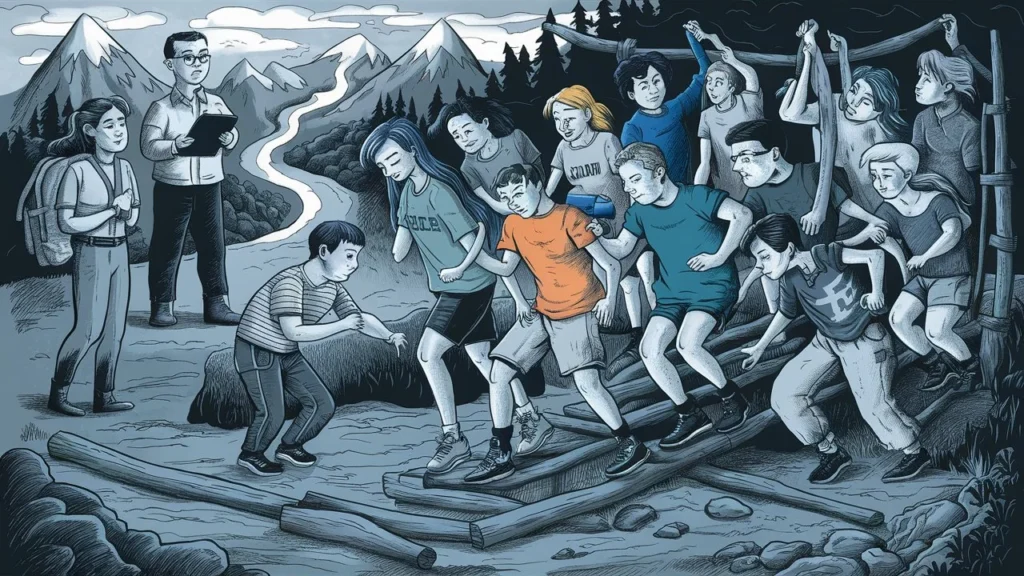
Key ethical considerations include:
- Informed consent
- Coercion and involuntary treatment
- Potential for abuse of power
The issue of informed consent is particularly thorny when it comes to minors. Many teens are sent to these programs against their will, often unaware of what awaits them. One former participant recalled, “I woke up to strangers in my room. I had no idea where I was going.”
Critics argue that the element of surprise and forced participation violates ethical standards of care. They question whether true therapeutic progress can be made under such circumstances.
The power imbalance between staff and participants in isolated wilderness settings is a major concern. This dynamic can potentially lead to abuse or exploitation. As one expert put it, “When you remove all external oversight, you create a perfect environment for abuse to occur.”
The use of harsh discipline or deprivation as “therapy” raises ethical red flags. Critics argue that practices like food restriction or prolonged isolation are more akin to punishment than treatment.
There’s also the question of cultural sensitivity. Wilderness therapy programs often impose a specific worldview that may not align with participants’ cultural backgrounds.
The long-term psychological impact of forcibly removing teens from their homes and subjecting them to extreme conditions is another ethical concern. Some argue that the potential for trauma outweighs any possible benefits.
Privacy is another issue. The intense group setting of many wilderness programs can lead to breaches of confidentiality and personal boundaries.
These ethical dilemmas highlight the need for stricter guidelines and oversight in the troubled teen industry. They also underscore the importance of exploring less invasive, more ethically sound alternatives for helping struggling adolescents.
Alternatives To Wilderness Therapy
While programs like Trails Carolina (Trails Carolina Horror Stories) market themselves as solutions for troubled teens, many effective, evidence-based alternatives exist. These options often carry less risk and can be more accessible to families.
Key alternatives include:
- Outpatient therapy
- Family-based interventions
- Community support programs
Cognitive Behavioral Therapy (CBT) and Dialectical Behavior Therapy (DBT) have shown significant success in treating various adolescent issues. These approaches can be implemented on an outpatient basis, allowing teens to maintain their normal routines.
Family therapy is another powerful tool. By involving the entire family unit, these interventions address systemic issues that may contribute to a teen’s struggles. One therapist noted, “Often, the ‘problem’ isn’t just the teen, but the family dynamics as a whole.”
Multisystemic Therapy (MST) is an intensive, home-based intervention that has shown promising results for teens with serious behavioral issues. It focuses on empowering parents and leveraging community resources.
Partial hospitalization or day treatment programs offer structured support without the risks associated with wilderness settings. These programs provide intensive therapy while allowing teens to return home each night.
School-based interventions can be effective for many teens. These might include counseling services, peer support groups, or specialized educational plans.
For substance abuse issues, community-based recovery programs tailored for teens can be highly effective. These often incorporate peer support and family involvement.
Mentoring programs, such as Big Brothers Big Sisters, can provide positive adult influences and support for at-risk youth.
In cases where more intensive care is needed, therapeutic foster care or short-term residential treatment in licensed facilities can offer a safer alternative to wilderness programs.
These alternatives often come with lower costs, reduced risks, and stronger evidence bases than wilderness therapy. They also allow for ongoing family involvement and easier transitions back to normal life.
By exploring these options, families can find effective help for troubled teens without resorting to the extreme measures and potential risks associated with programs like Trails Carolina Horror Stories.
Calls For Reform In The Wilderness Therapy Industry
As concerns about programs like Trails Carolina Horror Stories mount, there’s a growing movement calling for substantial reforms in wilderness therapy and troubled teen industries.
Key areas of reform include:
- Increased regulation and oversight
- Improved transparency
- Enhanced safety measures
Advocacy groups, led by program survivors and concerned professionals, are pushing for stricter federal regulations. They argue that the current patchwork of state laws is insufficient to protect vulnerable youth.
One proposed measure is the Stop Institutional Child Abuse Act, which would establish federal oversight of residential youth programs, including wilderness therapy. An advocate explained, “We need consistent standards across all states to prevent programs from exploiting regulatory gaps.”
Calls for transparency are also gaining traction. Reformers demand public reporting of incidents, clear communication of risks to families, and independent audits of program practices and outcomes.
Improved staff training and qualification requirements are another focus. Critics argue that current standards in Trails Carolina Horror Stories are too lax, putting participants at risk. “We wouldn’t accept this level of training in any other healthcare field,” one expert noted.
There’s also a push for better-informed consent processes. This includes giving teens a voice in the decision and ensuring families have a complete understanding of the program before enrolling.
Some reformers advocate for a complete ban on “transport services” that forcibly remove teens from their homes, arguing this practice is inherently traumatic.
Financial reforms are also on the agenda. Proposals include better insurance coverage for mental health treatments and regulations to prevent predatory pricing practices.
Improved aftercare and transition support is another key demand. Many argue that the abrupt return to normal life after an intense wilderness experience can be jarring and counterproductive.
These calls for reform highlight the urgent need for change in the troubled teen industry. As scrutiny increases, programs like Trails Carolina may face growing pressure to adapt or risk being shut down.
Conclusion
The investigation into Trails Carolina horror stories reveals a troubling gap between the promises of wilderness therapy and the experiences of many participants. This exploration raises critical questions about the ethics, safety, and effectiveness of such programs.
Key takeaways include:
- The need for stronger oversight and regulation
- The importance of exploring evidence-based alternatives
- The value of transparency in treatment approaches
While some participants report positive outcomes from wilderness therapy, the numerous accounts of trauma, abuse, and lasting negative impacts cannot be ignored. These stories underscore the urgent need for reform in the troubled teen industry.
Parents considering wilderness therapy programs should approach such decisions with caution. Thorough research, including speaking with former participants and their families, is crucial. It’s essential to explore all available options and consider less extreme interventions first.
Policymakers and mental health professionals must work together to develop safer, more effective approaches to helping troubled teens. This may involve stricter regulations, improved staff training, and a shift towards community-based interventions.
Ultimately, the well-being of vulnerable youth must be the top priority. As we move forward, it’s crucial to listen to the voices of those who have experienced these programs firsthand and to demand greater accountability from the industry.
By shedding light on the realities of wilderness therapy, we can work towards a future where troubled teens receive the support they need without being exposed to unnecessary risks or trauma. The path to healing shouldn’t create new wounds.

Matthew Porter is the innovative mind behind Insuranted.com, a website dedicated to providing clear, comprehensive, and reliable information on insurance. With a passion for simplifying complex topics, Matthew aims to empower readers to make informed decisions about their insurance needs
